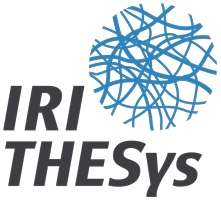PhD Project
Intro
The Paris Agreement inaugurated a new scope for finance within climate negotiations and governance. This scope went beyond previous commitments under the United Nations Framework Convention on Climate Change (UNFCCC), which were linked to operational and budgetary issues and, more centrally, to the financial support to developing countries’ implementation of their climate commitments. The systemic goal of making finance flows consistent with a pathway towards low greenhouse gas emissions and climate-resilient development (article 2.1c of the Agreement) has not only assigned a collective purpose to all signatory Parties, but also indicated a means that was collectively agreed towards fully achieving the Agreement’s mitigation (2.1a) and adaptation (2.1b) long-term goals. This new scope for a financial climate consistency applies to all flows, public and private, domestic and international.
Research focus
In the pursuit of solutions to bring finance flows under climate consistency, governments and financial actors have been developing a myriad of financial-based solutions. Such developments are taking place outside the realm of climate negotiations, primarily seeking to address climate objectives that are common to the constituencies located at the core of the global financial system. Simply put, financial narratives and solutions are currently created to address the climate challenges faced by advanced economies.
However, how suitable are these solutions for climate-vulnerable countries that are already heavily indebted or cannot count on a nationally advanced financial sector? How are such developments taking into account key issues such as vulnerable countries’ adaptive capacity? Building on these considerations, what are the alternatives for vulnerable countries to engage with the development of context-adequate and climate-ambitious solutions for the achievement of the climate consistency goal of the Paris Agreement?
Structure
The first step is to define the scope of art. 2.1(c) of the Paris Agreement. From that cornerstone understanding, two case studies will carry a fieldwork in two different types of developing countries: Rwanda, as a least developed country, and Peru, as an upper-middle income country. The last phase will build theoretically on the effects for developing countries from financial initiatives for fighting climate change.
Output
Zamarioli, L.; Pauw, P; Chenet, H; König, M. (accepted for publication at Nature Climate Change). The climate consistency goal and the transformation of global finance.
Zamarioli, L. H. et al. (2021). ‘The climate consistency goal and the transformation of global finance’, Nature Climate Change, 11, pp. 578–583. DOI: 10.1038/s41558-021-01083-w.



